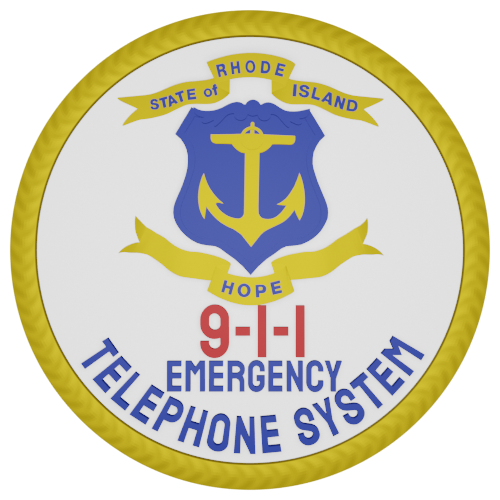Mapping
The RI E 9-1-1 mapping project captures GIS (Geographic Information Systems) data consisting of information such as site location of buildings, streets, fire hydrants, public places, public telephones and driveway access points. In collecting the necessary data, employees drive a marked vehicle with lettering which identifies its 9-1-1 function. They drive every street and road in Rhode Island, stopping at each structure to obtain or verify an address, capture the latitude and longitude of each structure, and take a digital photograph of it. All of this information is displayed on a digital map at the RI E 9-1-1 Telecommunicator's console, enabling the call taker to assist emergency response agencies find locations of callers more quickly, whether it be a wireline or wireless call.
The GIS Data Development Project
Rhode Island was the first statewide 9-1-1 system in the United States to be capable of receiving "Phase II" 9-1-1 wireless call location information. The system's GIS Data Development Project commenced in FY 2001. RI E 9-1-1 field-captures GIS data and this data is then integrated with other data layers on maps.
RI E 9-1-1 GIS data collection offers other benefits to State and local governments: the development or enhancement of databases that can be utilized for area-wide emergency notification, for municipal tax assessment and valuation, for transportation and land use planning, and for economic development.
How We Help You
RI E 9-1-1 uses state-of-the-art location technology including:
- Phase II - Telecommunication receive the XY (latitude and longitude) coordinates of the caller.
- Geographic Information System (GIS) - Uses satellite-based technology to identify the location of an emergency call along with a digital photograph.
- Pictometry - An aerial imaging database that can help in situations where exact location coordinates may not be available by provided oblique aerial photographs of the caller's location. This imagery provides 9-1-1 call takers with the ability to quickly ask probing questions that could help locate and assist callers in a crisis situation.
How You Can Help Us
Calling 9-1-1 and reporting your emergency is only part of what you need to do to get help. The other part is displaying your house number so that it can be easily seen, day or night, in all seasons, from the road in front of your home or business. If your house is too far off the road for the number to be read, post a reflective number sign close to the roadway. If you post your number on your mailbox, post them on both sides. Reflective materials improve visibility.
